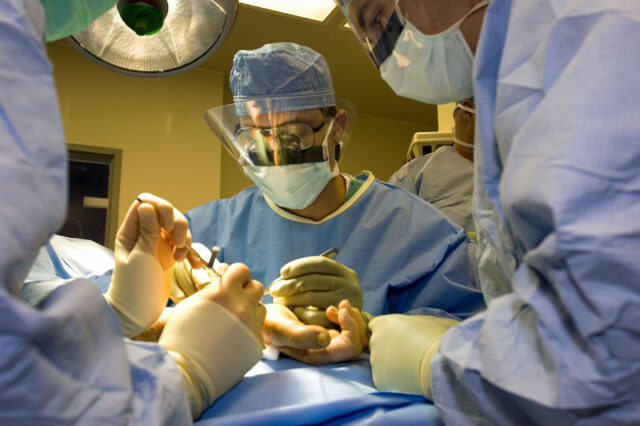Services

A history and physical examination are supplemented with blood tests, radiographs (x-rays), computerized tomography (CT) scans, magnetic resonance scans (MRI) or bone scans.
Some patients may need an electromyogram (EMG) or nerve conduction velocity test (NCV) to evaluate nerve function. An EMG/NCV is a specialized test in which electrodes are placed over nerves or muscles to test electrical activity. This test may require very small, sterile needles to be inserted into the skin.
Patients should expect a discussion with their physician about their symptoms and medical history, followed by an examination of the affected area and surrounding areas. Radiographs are commonly obtained to view the injured or painful area. CT and MRI scans may be ordered.
Treatment options
Treatment may include:
Braces, casts or splints - These immobilizing devices are used to protect the hand while it heals.
Occupational or hand therapy - This therapy is provided by UF Health Jacksonville licensed therapists who help guide the patient on how to use a splint, teach exercises to promote recovery and provide other treatments to improve motion or function.
Irrigation and debridement - During this procedure, the hand surgeon examines the areas around a wound or infection and removes all of the dirt or foreign material and any tissue that may be damaged to the extent that it will not survive. The wound is then washed with fluid.
Open reduction and internal fixation - The surgeon puts the bone pieces back together (open reduction), holding them in place with plates, screws, rods or wires. Orthopaedic surgeons at UF Health Jacksonville use the latest techniques, including minimally invasive procedures, when appropriate.
External fixation - In this procedure, the surgeon inserts pins that go through the skin and into bone both above and below the fracture site. This is usually a temporary (days to weeks) treatment used to allow soft tissues at a fracture site to heal.
Osteotomy and internal fixation - The surgeon cuts the deformed bone (osteotomy) to allow it to be straightened and then applies plates, screws or rods to hold it in place while it heals (internal fixation).